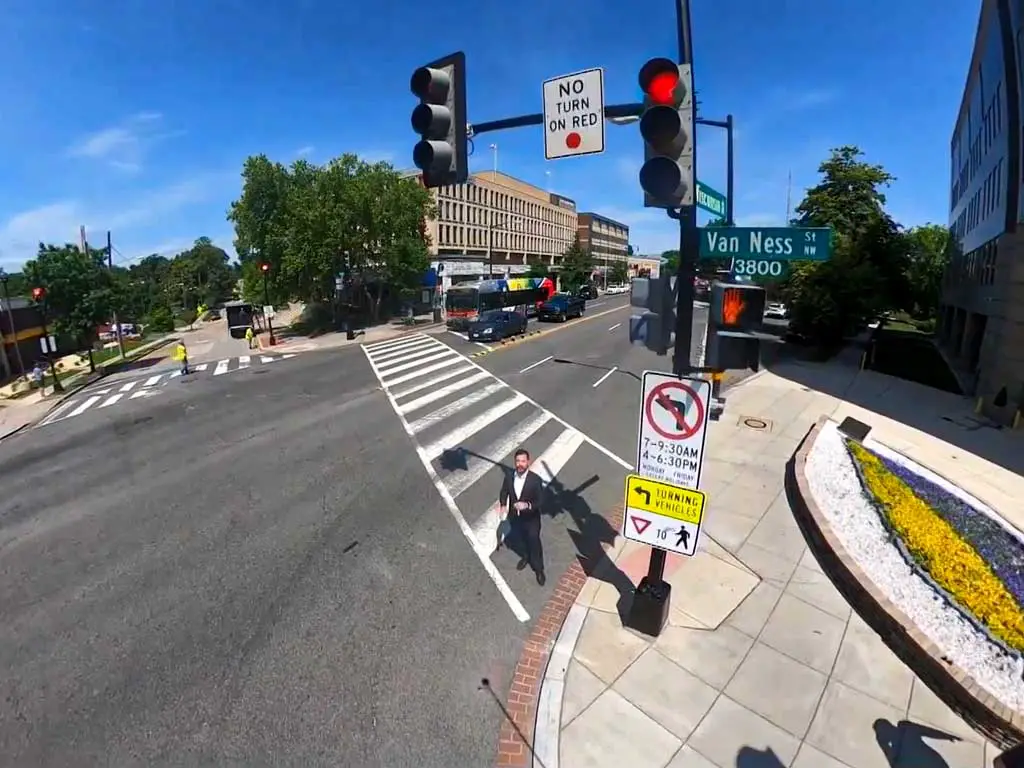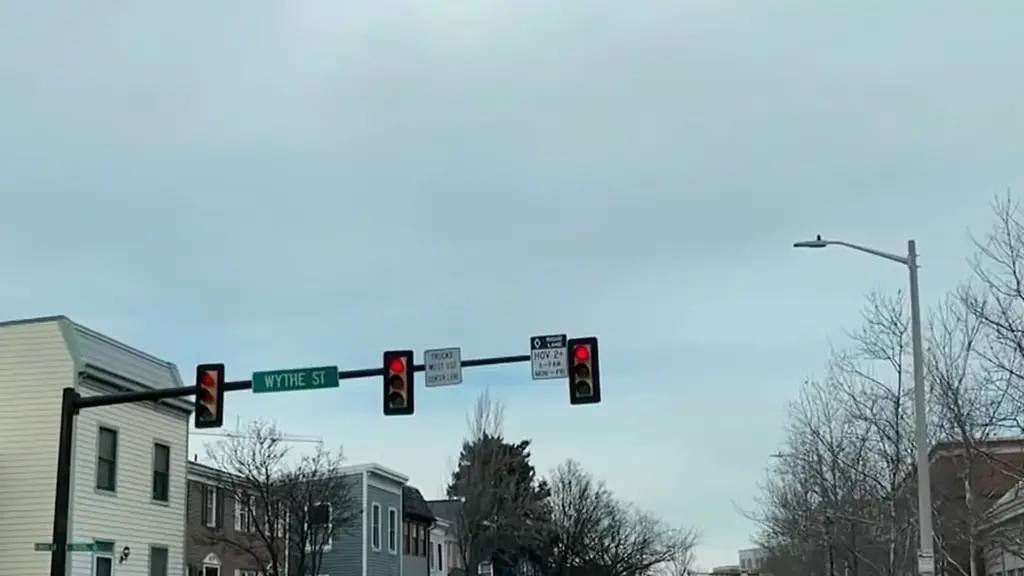Navigating the streets of Washington, D.C., can be a unique experience for both residents and visitors, particularly when it comes to understanding local traffic laws.
One common question that arises is whether turning right on a red light is permitted in the nation’s capital.
Unlike many other U.S. cities, Washington, D.C., has specific regulations that generally prohibit right turns on red unless explicitly indicated by signage.
This rule is designed to enhance safety and ensure a smooth flow of traffic in a city characterized by its high pedestrian density, complex traffic patterns, and significant number of cyclists.
Understanding the rationale behind this regulation, including concerns for pedestrian and cyclist safety, visibility at intersections, and maintaining consistent local traffic laws, is crucial for anyone driving in Washington, D.C.
Adhering to these rules not only helps prevent accidents but also contributes to the overall efficiency of the city’s transportation network.

Can You Turn Right on Red in Washington DC
In Washington, D.C., turning right on red is not permitted unless specifically posted otherwise.
Main reasons for banning right turns on red in Washington, DC are:
Pedestrian Safety
Washington, D.C., has a high density of pedestrian traffic, particularly in busy downtown areas, near tourist attractions, and around schools.
Prohibiting right turns on red reduces the risk of accidents involving pedestrians who often have the right of way at intersections.
This measure ensures that drivers come to a complete stop and wait for the green light, providing a safer crossing environment for pedestrians.
The city’s commitment to pedestrian safety is evident in its efforts to create a walkable urban environment, where pedestrians can navigate intersections without the threat of turning vehicles.
Complex Traffic Patterns
The city’s traffic flow is intricate, with numerous one-way streets, unique intersections, and frequent changes in traffic direction.
Allowing right turns on red could disrupt this delicate balance, leading to congestion and accidents.
By banning these turns, D.C. ensures a more orderly and predictable traffic flow, which helps in reducing the likelihood of traffic jams and collisions.
The complexity of the traffic patterns requires careful management, and eliminating right turns on red helps maintain a smoother and safer flow of vehicles through the city.
Visibility Concerns
Many intersections in Washington, D.C., are designed in such a way that buildings, parked vehicles, and other obstructions limit drivers’ visibility.
This makes it difficult to see oncoming traffic and pedestrians when turning right on red. By prohibiting these turns, the city ensures that drivers have a clear view of the intersection when the light turns green, thereby enhancing overall safety.
Visibility issues are particularly pronounced in densely built areas, where narrow streets and tall buildings can obstruct a driver’s line of sight, making it imperative to stop fully and assess the situation before proceeding.
Bicyclist Safety
Washington, D.C., is home to a significant number of cyclists who often share the road with motor vehicles.
Intersections can be particularly dangerous for cyclists, and allowing right turns on red increases the risk of collisions.
Banning these turns helps protect cyclists by reducing the chances of vehicles cutting them off or colliding with them during the turn.
The city’s infrastructure includes numerous bike lanes and designated cycling routes, and ensuring the safety of cyclists at intersections is a crucial component of promoting sustainable and healthy transportation options.
Consistency with Local Laws
Traffic regulations in Washington, D.C., can differ from those in neighboring states. Prohibiting right turns on red helps to maintain a consistent set of rules for all drivers within the city, which is crucial for both local residents and visitors.
This consistency reduces confusion and ensures that drivers can navigate the streets with a clear understanding of the traffic laws, ultimately promoting safer driving practices.
Given the city’s status as a major metropolitan area with a large influx of visitors, clear and consistent traffic regulations are essential to avoid misunderstandings and potential accidents.
Potential Benefits of Banning Right Turns on Red

Banning right turns on red in urban areas like Washington, D.C., can offer several potential benefits that contribute to safer and more efficient traffic management:
Enhanced Pedestrian Safety
Banning right turns on red enhances pedestrian safety by reducing potential conflicts at intersections.
In urban areas like Washington, D.C., where foot traffic is heavy, pedestrians often have the right of way.
Allowing vehicles to turn right on red could increase the risk of accidents, as drivers may not always yield to pedestrians crossing the street.
Requiring vehicles to wait for a green light ensures that pedestrians can safely navigate intersections without the added hazard of turning vehicles.
Improved Traffic Flow
Maintaining stricter control over right turns on red helps optimize traffic flow, especially in complex urban environments.
Washington, D.C., with its network of one-way streets and busy intersections, benefits from this measure by preventing disruptions caused by merging vehicles.
Allowing right turns on red can lead to congestion and delays, particularly during rush hours when traffic volumes are high.
By banning this maneuver, the city ensures smoother traffic movement and reduces the likelihood of gridlock, enhancing overall efficiency.
Safer Intersections
Visibility is often a challenge at many intersections in Washington, D.C., due to buildings, parked cars, and other obstructions.
Prohibiting right turns on red ensures that drivers have clear sightlines of oncoming traffic and pedestrians before proceeding.
This clarity helps prevent accidents caused by limited visibility and allows drivers to make safer decisions when navigating intersections.
By requiring a complete stop and a green light to proceed, the city promotes intersection safety for all road users.
Consistency and Predictability
Washington, D.C., has its own distinct traffic regulations that aim to maintain order and safety on its streets.
Banning right turns on red helps uphold consistency in traffic management practices, reducing confusion among drivers and pedestrians.
This predictability encourages safer driving behaviors and ensures that everyone understands and follows the same rules at intersections throughout the city.
Consistent enforcement of traffic laws contributes to a safer urban environment and enhances overall road safety.
Environmental Benefits
Reducing vehicle emissions is a significant environmental benefit of banning right turns on red. By minimizing idling and stop-and-go traffic at intersections, the city can lower the overall carbon footprint of its transportation system.
Smoother traffic flow means fewer emissions released into the atmosphere, contributing to improved air quality and supporting environmental sustainability efforts.
This reduction in pollution benefits not only residents but also contributes to the city’s long-term environmental goals.
Promotion of Alternative Transportation
Banning right turns on red creates a safer environment for cyclists and pedestrians, encouraging more people to choose active transportation options.
In urban areas like Washington, D.C., where biking and walking are popular modes of transport, reducing conflicts with turning vehicles enhances safety for non-motorized road users.
By prioritizing pedestrian and cyclist safety at intersections, the city promotes healthier lifestyles and reduces dependency on cars for short trips, contributing to a more livable and sustainable urban environment.
Exceptions to the Right Turn on Red Ban in Washington DC

In Washington, D.C., the general rule is that right turns on red are prohibited unless otherwise posted.
However, there are exceptions and specific circumstances where drivers may legally make a right turn on red:
Designated Right Turn Permits
In Washington, D.C., designated intersections where right turns on red are permitted are carefully chosen based on traffic flow and safety considerations.
These intersections are marked with clear signage that informs drivers of the allowance to turn right after coming to a complete stop and ensuring it is safe to proceed.
This flexibility helps manage traffic efficiently at specific locations where congestion may be minimized by allowing right turns on red during appropriate times.
Special Traffic Signals
Certain intersections in Washington, D.C., utilize specialized traffic signals to regulate right turns on red.
These signals may include a dedicated green arrow indicating when drivers can legally make a right turn on red after yielding to pedestrians and oncoming traffic.
Such signals are designed to provide clear guidance to drivers and enhance intersection safety by ensuring coordinated movement of vehicles and pedestrians.
Right Turn on Red Arrow
Intersections equipped with a dedicated right turn lane and a red arrow signal offer drivers the opportunity to turn right on red under controlled conditions.
Drivers must comply with accompanying signage that specifies the conditions under which right turns on red are permitted, typically requiring a full stop and yielding to pedestrians and other vehicles.
This setup improves traffic flow while maintaining safety by allowing vehicles to proceed when no conflicting traffic is present.
Yield to Pedestrians and Vehicles
Regardless of traffic signals or signage permitting right turns on red, drivers in Washington, D.C., are obligated to yield to pedestrians and vehicles already in or approaching the intersection.
This rule is crucial for pedestrian safety and ensures that drivers exercise caution when making right turns on red, preventing potential accidents and conflicts with other road users.
Turning Restrictions and Peak Hours
Some intersections in Washington, D.C., may impose restrictions on right turns on red during peak traffic hours or for other safety-related reasons.
Signs posted at these locations inform drivers when right turns on red are prohibited, even if allowed elsewhere in the city.
These restrictions aim to manage traffic effectively during periods of high congestion and reduce the risk of collisions at busy intersections.
School Zones and Crosswalks
Near schools, parks, and areas with significant pedestrian activity, right turns on red may be restricted to prioritize the safety of children and pedestrians.
Drivers must remain vigilant for signage and traffic signals indicating these restrictions, ensuring compliance to create a safe environment for vulnerable road users.
These measures underscore the city’s commitment to pedestrian safety and encourage responsible driving behavior near areas frequented by pedestrians.
Frequently Asked Questions
Can I make a right turn on red in Washington, D.C.?
Generally, right turns on red are prohibited unless there is specific signage or signals at an intersection indicating otherwise. Drivers should always check for posted regulations before attempting a right turn on red.
Where are right turns on red allowed in Washington, D.C.?
Right turns on red are permitted at designated intersections where clear signage indicates this allowance.
What should I do if there’s a red arrow at a right turn lane?
If there is a red arrow signal at a dedicated right turn lane, drivers must wait for a green arrow or a sign allowing a right turn on red after a complete stop and yielding to pedestrians and other vehicles.
Do I have to yield to pedestrians when making a right turn on red?
Yes, regardless of traffic signals or signs permitting right turns on red, drivers must yield the right of way to pedestrians and cyclists already in or approaching the intersection. Pedestrian safety is prioritized in Washington, D.C.
Are there restrictions on right turns on red during certain times?
Some intersections in Washington, D.C., may have restrictions on right turns on red, especially during peak traffic hours or in areas with high pedestrian activity. Signs at these locations will specify any time-based restrictions.
Conclusion
Washington, D.C.’s regulations prohibiting right turns on red unless otherwise specified by signage or signals are rooted in prioritizing safety and managing traffic flow effectively.
The city’s dense pedestrian environment, complex traffic patterns, and visibility concerns at intersections necessitate careful regulation to prevent accidents and ensure orderly movement.
By enforcing these rules, D.C. aims to create a safer urban environment where pedestrians can navigate intersections without the added risk of turning vehicles.
Additionally, consistent enforcement of these regulations helps maintain clarity and predictability for both residents and visitors navigating the city’s streets.
While exceptions exist at designated intersections with appropriate signage, adherence to the general prohibition on right turns on red supports Washington, D.C.’s commitment to enhancing overall traffic safety and promoting sustainable transportation practices.




Scott Jung